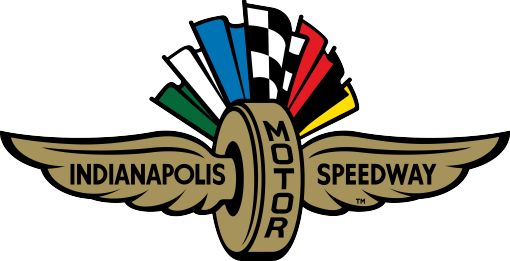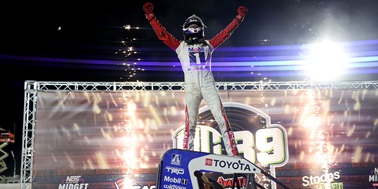Forty years ago, when Darrell Waltrip stepped into NASCAR’s top series as a raw-boned kid from Kentucky, he did not project the lovable, sometimes goofy persona millions of racing fans now see on motorsports television.
Waltrip was an upstart, a fast-talking, hyper-active driver who knew exactly where he was going, thought he knew how to get there and wasn’t going to let anyone – including the giants of the sport – stand in his way.
He barked at crew chiefs. He rattled team owners. He irritated veteran drivers.
NASCAR had never seen anything quite like him, and it would be a while before they would again. He talked big, raced hard, ran through – and sometimes over – the competition, and steadily built himself a place at the sport’s top level.
He drove on to win 84 races, three Cup championships, almost $20 million and established himself as one of a handful of drivers who might be considered among the top five of all time.
Those accomplishments will be saluted at the highest level Friday night when Waltrip joins Cale Yarborough, Glen Wood, Dale Inman and the late Richie Evans as inductees in the third class of the NASCAR Hall of Fame in a ceremony in Charlotte, NC. SPEED will broadcast the induction Jan. 22 at 6 p.m. (ET).
Waltrip’s ride through the sport – particularly in the 1980s – made it clear that he would be a virtual lock for any motorsports hall of fame for which he might be eligible. Friday he marches into perhaps the biggest.
It all began for Waltrip at the Cup level at Talladega Superspeedway in 1972 as he hauled a No. 95 Mercury – sponsored by Terminal Transport, a company operated by his father-in-law – from his home in Owensboro, KY to Alabama to try to run with the big boys. He had been burning up short tracks in Kentucky and Tennessee.
Alabama hardly noticed his arrival.
 |
“Stevie (his wife) and I and my little dog Charlie Brown got up in the cab of my old International Maxwell House Coffee truck – that was what on the side of the truck,” Waltrip remembered later. “I had bought it used in Owensboro. It was an old International truck. It was almost as pretty as the car.
“The car was two-tone brown, Terminal Transport, No. 95. … I went to Western Auto and bought some jackstands and some tools. I had eight tires and wheels and some jackstands and a little box of tools. It looked like I was going fishing.
“[I had] a pair of Hush Puppies I drove in and a uniform Goodyear had given me and a helmet I think Marty Robbins had given me. That was my famous start into Winston Cup racing.”
Waltrip limped into the garage area during the race with a blown engine and finished 38th. Not an auspicious start.
Three years later, Waltrip had his first Cup win – at Nashville, TN. The victory came in his own car, but Waltrip’s talents earned the notice of team owner Bill Gardner, and Waltrip soon was driving the No. 88 Gatorade-sponsored cars owned by DiGard Racing.
Thus began a tenuous relationship that found Waltrip, even as he was winning races, in battles with various team members, including Gardner. Crew chiefs wandered in and out of the DiGard facility in Charlotte, NC as Waltrip notched 26 wins with the team.
Waltrip’s key car during that period was a Chevrolet Monte Carlo nicknamed “Bertha,” a dependable and versatile race car that produced for Waltrip from the half-mile of Bristol Motor Speedway to the high banks of Talladega.
“She was the battleship,” Waltrip said. “We’d crash her, wreck her, then fix her and go racing again. She was a great race car, and we ran her to death.”
As Waltrip raced through the 1970s, he naturally took aim at the Cup championship, a title that barely eluded him in 1979, when he lost the championship by only 11 points to Richard Petty.
Later, Waltrip said he didn’t put enough emphasis on the championship in the first part of his career.
“When I came into the sport, all I was thinking about was winning a race,” he said. “We’re going to race today, and I want to win. We’re going to race tomorrow, and I want to win tomorrow.
“That’s what it was about – instant gratification. I didn’t realize I could back it off a little bit and get
 |
that championship and that someday that might be more important than those wins. I threw one away in 1979. I had a shot at one in ’80, in ’84. From 1979 to ’85-’86, I should have won them all.”
As part of Waltrip’s early years in the sport, he picked up the nickname “Jaws,” courtesy of Yarborough, who’ll join him in the Hall class Friday night.
It happened at the Southern 500 in Darlington, SC in September 1977. Waltrip and Yarborough were involved in an accident about two-thirds through the race. Waltrip hit the car of D.K. Ulrich, and Ulrich hit Yarborough’s car.
Ulrich assumed that Yarborough had hit him and questioned the veteran driver about the incident after the race.
“I didn’t hit you,” Yarborough responded. “Jaws ran into you. You know, Jaws. That guy who talks all the time.”
Although Waltrip had success at DiGard, his relationship with the team owners soured, and he tried to void his contract to take a ride with a team owned by Harry Ranier. That move didn’t work, but Waltrip eventually bought out his contract – a first in NASCAR, at a cost of $325,000 – to accept the driver’s seat of Junior Johnson’s Chevrolets after Yarborough had decided to leave Johnson to race part-time.
It was his chance, Waltrip reasoned, to reach the championship. Yarborough had won three straight in Johnson’s cars from 1976-78.
As he was so often, Waltrip was right. He needed only a relatively short time to work magic, taking his first series championship in 1981 and winning 12 of 31 races. He repeated the dozen victories the next season and won the title again.
In 1983, he won six times but lost a bitter race for the title to Bobby Allison, who would be Waltrip’s biggest rival. Allison was exactly the sort of experienced veteran Waltrip targeted as he rose through the sport, and Allison, never one to back down from a fight, gave as good as he got. They are friends today, but the relationship retains something of an edge.
Waltrip soared to his third title in 1985, cementing his star status.
In 1989, driving for team owner Rick Hendrick, he finally won the Daytona 500 after failing in 16 previous attempts.
As Waltrip ran through the second half of his career, he mellowed in his on- and off-track behavior and soon became a fan favorite. Unfortunately, the final years of his career saw steady decline in his performance, although he stuck with it until 2000. He eventually returned to driving cars from his own shop.
In 1996, he talked of his decision to press on, one made in part because the sport was growing by leaps and bounds and he didn’t want to miss getting his piece of the pie, as he put it.
“This is a great time to be in our sport,” he said. “The pie is huge. It’s not a small, little pie like it used to be when you got your great big hunk of it and everybody had to take what’s left. Today’s there’s a little room for everybody in there.
“That’s the biggest difference between then and now. I used to be the show. Now I’m just a part of the show.”
Waltrip didn’t win a race for the final eight seasons of his career, but his 84 victories put him in a tie with – ironically – Allison for fourth on the all-time win list.
He signed on with Fox Sports as a NASCAR race commentator and remains one of the key players in Fox and SPEED telecasts.




